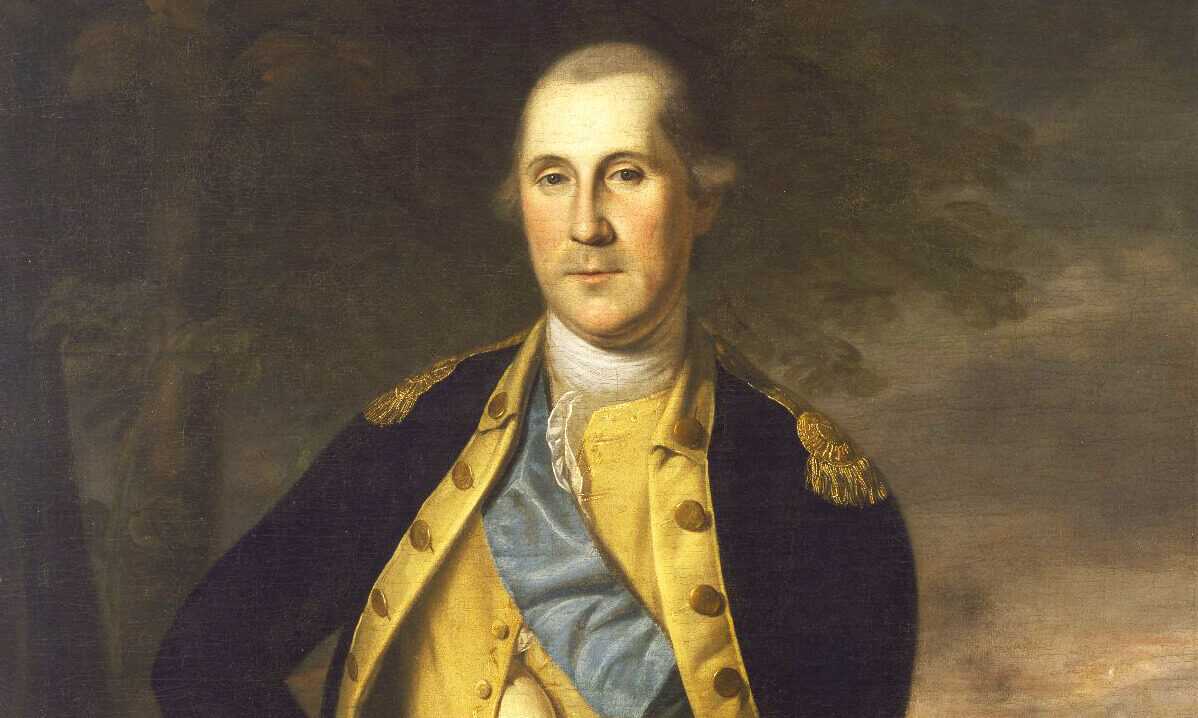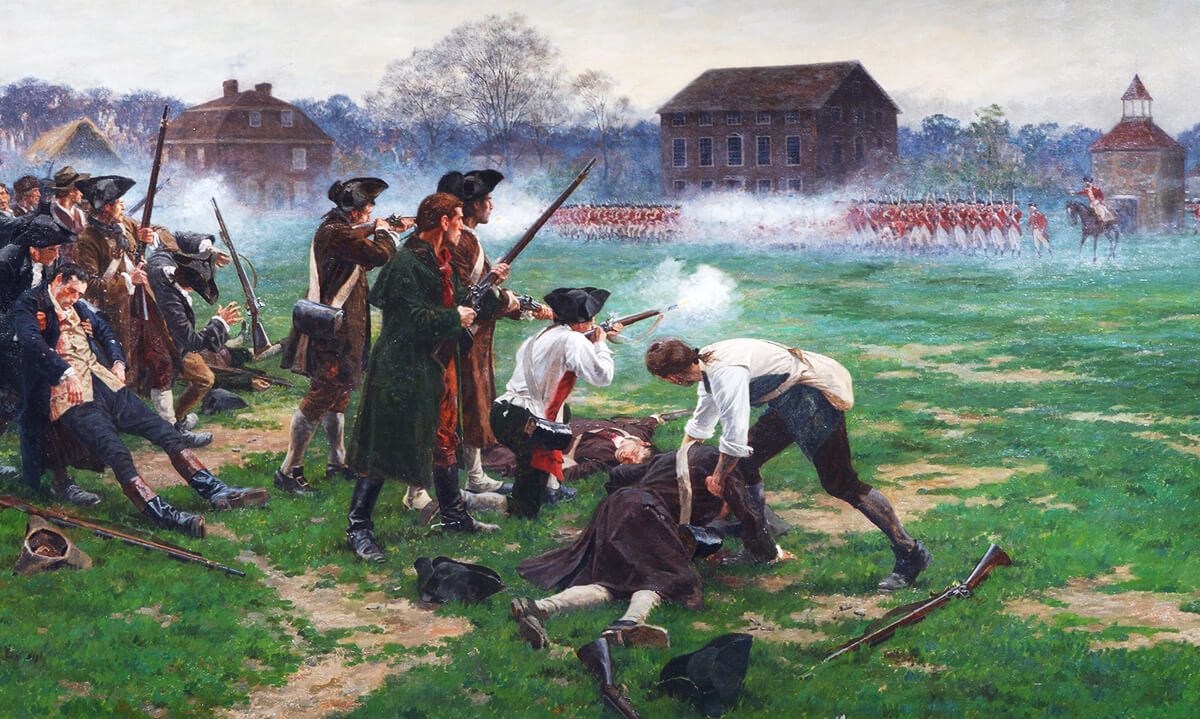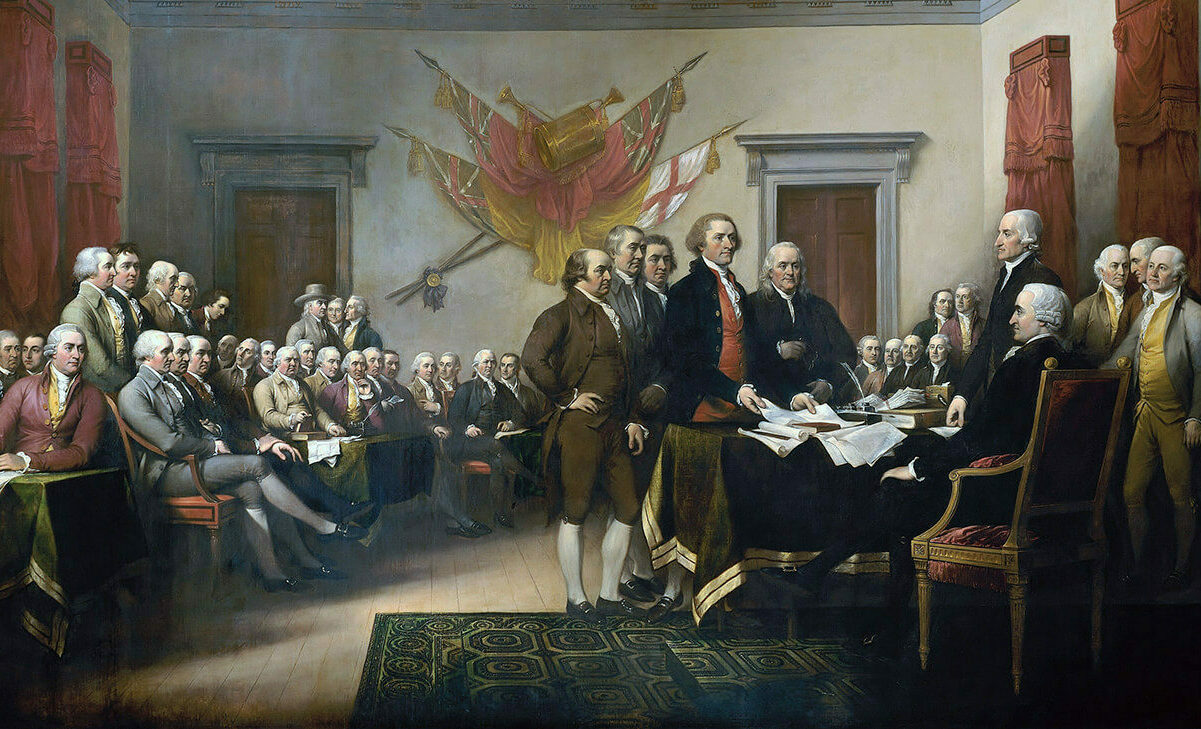by David Barton
Groups such as the American Civil Liberties Union (ACLU), Americans United for the Separation of Church and State (AU), the Freedom From Religion Foundation (FFRF), the Anti-Defamation League (ADL), People For the American Way (PAW), American Atheists (AA), the Baptist Joint Committee (BJC), and many similar groups are among those included within the movement know as “The Left.”
The Left can be described by various terms (including “postmodernists,” “progressives,” “secularists,” “social Darwinists,” etc.), and the many groups within the Left utilize tactics encompassed within what is known as deconstructionism and poststructuralism. It is helpful to define the above terms so as to recognize when they appear (even if under a different name) and thus be better equipped to neutralize their harmful efforts. As the Scriptures remind us:
- We don’t want to unwittingly give Satan an opening for yet more mischief – we’re not oblivious to his sly ways! 2 Corinthians 2:11 (The Message)
- Your enemy prowls around like a roaring lion looking for someone to devour. 1 Peter 5:8
- Be wise as serpents and harmless as doves. Matthew 10:16
Postmodern
While “postmodern” can be defined as advocating “a radical reappraisal of modern assumptions about culture, identity, and history”1 (that is, attacking and enfeebling traditional values such as marriage, life, public religious expressions, private property protections, free market economics, etc.), to define “postmodern” in this narrow manner actually wrongly minimizes its much larger goals and objectives. “Postmodern” is actually the description of a comprehensive worldview that employs the tactics associated with deconstructionism and poststructuralism – the dual poisons by which it produces its “radical reappraisal of modern assumptions about culture, identity, and history.”
Deconstruction
According to sources that are familiar with and that also utilize this particular practice (such as the online encyclopedia Wikipedia as well as many academics, professors, authors, and journalists), “Deconstruction” is the scheme of attacking the foundation on which a belief is based.2 According to Yale Professor Jack Balkin, deconstruction “effaces [maligns, smears, and undermines] the subject”3 by posing “a continuous critique” to “lay low what was once high.”4 The popular objects of attack by Deconstructionists – that is, the things they most frequently “efface” – include “the Constitution, tradition, the family, or the history and culture of American sexual and domestic values”5 in order “to tear down the ancient certainties upon which Western Culture is founded.”6 The result of deconstructionism is a steady flow of belittling and negative portrayals of Western institutions, beliefs, and values.
A common tactic used by Deconstructionists to “deconstruct” and “efface” America’s traditional constitutional, moral, and religious values is to identify an exception or an anomaly and then publicize it as if it were commonplace and standard.
As an example of how deconstructionism works, imagine that a magnificent skyscraper of over 100 stories has just been built – a beautiful new structure that will house hundreds of businesses and sustain thousands of permanent jobs in a modern and luxurious state-of-the-art facility. Deconstructionists would turn public opinion against that elegant facility by releasing a series of sniping stories and news “reports” – they would claim that the carpet on the lobby of the 4th floor is of a ridiculous color – that one of the windows on the 32nd floor is not properly aligned and is out of square – that the women’s restroom on the 58th floor is sexist because it lacks a sufficient number of stalls – or that an office on the 83rd floor is too small to make an efficient working space for the already oppressed American worker so frequently exploited by big business.
Even though there are tens of thousands of windows in that building, they will focus on just one; and while there are hundreds of offices of all sizes throughout the building, they will attack just one; and while there are a thousand restroom stalls throughout the structure, they denounce just one; and although there are 100 lobbies in the structure, they will condemn just one (even if the other 99 are completely praiseworthy). In short, Deconstructionists emit a relentless stream of criticism about a few narrow and carefully selected items in order to shape a generally negative impression in the minds of citizens – i.e., that the skyscraper is of inferior and shoddy workmanship – that it discriminates against women – that the designers were incompetent, etc. Citizens will hear nothing from Deconstructionists about the tens of thousands of positive attributes in the structure but only a continual recitation of a handful of its alleged insufficiencies.
While the example of a skyscraper was chosen, Deconstructionists apply the same strategy in their portrayal of America and American history. (The deconstructionism of America and of Western values and institutions is a standard practice in academia today and is willingly cooperated with by large segments of the national media, who were trained in those same academic deconstructionist institutions.) As a result, most citizens today know more about why America, Christianity, and Western civilization is bad than why it is good – they can tell you about every “wart” that has ever appeared in the history of the nation but can tell you nothing about the phenomenal successes, prosperity, and stability that have made America the most exceptional nation in the world.
As an anecdotal affirmation of how thoroughly deconstructionism has permeated academia and culture, when I speak at law schools – schools in advanced post-graduate studies, full of America’s best and brightest students – I regularly display a slide of the famous painting of the “Signers of the Declaration of Independence” by artist John Trumbull. I then ask the students which of the 56 signers in that famous painting they can identify. At every law school where I have been, students immediately locate Benjamin Franklin and Thomas Jefferson but none of the other 54. They have been trained to recognize the two least religious signers and then have wrongly been told that Jefferson and Franklin were typical of the religious beliefs of the others, not realizing that 29 of the 56 signers held what today are called seminary or Bible-school degrees, and that many other signers who held no such degrees were nevertheless outspoken about the positive influence of Christianity in their lives and the culture. In short, today’s students have been taught to recognize the exception rather than the rule.
Likewise, I also ask students whether the Founding Fathers were a collective group of racists, bigots, and slaveholders, and immediately I receive an emphatic “Yes!” I then ask students to identify which of the 56 signers in the painting owned slaves. All immediately point out Thomas Jefferson, but no one has ever pointed out a second example. They have been taught that the Founding Fathers were racists; they know that Thomas Jefferson owned slaves; and apparently that proves that all the Founders owned slaves. Yet the overwhelming majority of the signers of the Declaration were anti-slavery; and it was their leadership that not only founded America’s first abolition societies but that also led to the abolition of slavery in numerous states following America’s separation from Great Britain in 1776. But because of the relentless use of deconstructionist tactics in pointing out everything that has ever gone wrong in America (and largely ignoring the things that have gone right), Americans today know more about the exceptions than the rule.
Significantly, Alexis de Tocqueville (a French political leader and historian who traversed America in 1831 and then wrote the famous book Democracy in America in 1835) extolled:
The position of the Americans is quite exceptional, and it may be believed that no democratic people will ever be placed in a similar one.7
That pronouncement resulted in the coining of the phrase “American Exceptionalism” to express the belief that America is extraordinary as a result of the unique and distinctive ideas that were part of the fabric of American government – ideas such as inalienable rights, individualism, limited government, full republicanism, separation of powers, checks and balances, and an educated and virtuous citizenry. Those ideas produced a national unity that encompassed America’s great diversity of race, ethnicity, and religion, thus causing President Calvin Coolidge to exclaim:
To live under the American Constitution is the greatest political privilege that was ever accorded to the human race.8
Yet Deconstructionists, rather than appreciating American Exceptionalism and being proud of America and its many successes, instead will point out only what they consider to be its flaws in their concentrated efforts to “lay low” America and American values.
Poststructuralism
According to Professor John Lye of Brock University, “Poststructuralism is marked by a rejection of totalizing, essentialist, foundationalist concepts” – concepts which include a rejection of components such as “the will of God” or the “reality of truth.”9 Poststructuralism not only rejects absolutes but is also “a-historical” (that is, it is non- or anti-historical), rejecting “objectivity” and “value-laden hierarchy,”10 believing instead that a meaning for something is constructed by each individual for himself and that meanings may shift and change based on that individual’s personal views.11
Poststructuralism also believes that persons have value not on the basis of who they are individually but rather on the basis of the groups with which they identify.12 This creates what is known as “identity politics,” whereby America is no longer composed of “Americans” but rather of various groups – i.e., of Gay Americans, Feminists, Union Members, Latinos, Blacks, Indians, Youth, Seniors, Socialists, Conservatives, Liberals, etc. A political manifestation of poststructuralism is seen in the manner in which Congress passes “hate crimes” laws determining which groups will receive protection (such as gays and lesbians) and which groups will not (such as veterans and seniors).
Poststructuralism undercuts nationalism by encouraging citizens to “view themselves as members of their interest group first, with the concerns of their nation and the wider community coming second.”13 It further degrades nationalism by emphasizing minority influence,14 inferring that the majority is inherently tyrannical and that majority-rule therefore must be set aside in order to achieve “justice” – that political power must be placed not in the hands of the larger whole but rather in the hands of smaller often unelected subgroups (such as the judiciary, administrative agencies, executive czars, etc.).
For two centuries prior to the mainstreaming of poststructuralism, America was accurately characterized by the phrase E Pluribus Unum (the Latin term that appears on the Great Seal of the United States), meaning “Out of many, one”, thus emphasizing that although there was much variety in America, there was a common unity that overcame all diversity. But poststructuralism instead emphasizes E Unum Pluribus – that is, “Out of one, many,” thus dividing the nation into separate groups and components with no unifying commonality between any of them (except their alleged “oppression” by the nation in general and the majority in particular).
Because poststructuralism rejects absolute truths in favor of individual interpretations (a condition lamented in Judges 21:25 that “everyone did that which was right in his own eyes”), individual anarchy against traditional unifying national values is encouraged and group affiliation is elevated above national identity. In short, in poststructuralism, being an American is not important but being part of some subgroup is.
Progressive
A “Progressive” is one opposed to maintaining things the way they are in respect to traditional values, culture, or the institutions of Western civilization (e.g., they want to change free-market economics, republicanism in government, the respected role of churches and religion, etc.). While “Progressive” is a synonym for liberals or leftists in politics, most liberals prefer to identify themselves as “Progressive,” believing that this label evokes a less negative public reaction than calling themselves “Liberal.”15
According to national polling, progressives (i.e., liberals) are “less religious on average than other ideological groups”16 and tend to support government-controlled and government-regulated businesses in preference to free-market competitive economics; socialism and collective ownership in preference to absolute protection for private property; the subjugation of individual inalienable rights to group rights; etc. Progressives reject not only the specific Biblical teachings undergirding each of these traditional societal traits but also the long and successful history of Western civilization that has been the result of applying those Biblical teachings in society.
A review of the numerous pieces of legislation introduced and supported both by “Progressives” in Congress and by Congress’ “Progressive Caucus” clearly affirms that Progressives and Liberals are anti- traditional American values and institutions.
Secularist
The term “Secularist” is by far the easiest term to define and means “a rejection or exclusion of religion and religious considerations,”17 especially from public arenas. Secularists object to public religious expressions or activities (whether by groups or individuals) and are particularly offended by religious rhetoric from leaders in public positions. Secularists are accurately described in Romans 1:28 as those who “did not think it worthwhile to retain the knowledge of God.”
Secularists frequently justify their opposition to public religious expressions either by (1) wrongly invoking “separation of church and state” (which they direct not against the “State,” as was its historical and proper usage, but rather against individuals), or (2) wrongly claiming that public religious expressions are improper because our government was built upon a so-called “godless constitution”18 and that America has been great throughout its four centuries of existence because its public policy remained secular.
Postmodern
“Postmodern” was defined at the beginning; and it is clear that the term comprises all of the aforementioned subcategories. It represents the comprehensive worldview characterized by a general rejection of the foundations (especially the political and spiritual ones) of traditional Western thought, civilization, and institutions. Hence, postmodernists reject not only absolutes such as truth, the inherent value of a single individual, and the importance of national unity but also concepts such as objectivity or knowing original intent or original meaning in either history or law.
As Barbara Epstein of the University of California at Santa Cruz explains, postmodernists tend to be individuals “who regard themselves as left, progressive, feminist, concerned with racism and homophobia”19 – they tend to be liberal, anti-free market, pro-socialist, anti-traditional values, and pro-gay. They also are generally hostile to the United States and to Israel.20
The Left
The most encompassing term by which postmodernists (whether as liberals, progressives, secularists, social Darwinists, etc.) may be identified is “The Left.” As Epstein explains:
Many people, inside and outside the world of postmodernism (and for that matter inside and outside the Left), have come to equate postmodernism with the Left. There are many academic departments and programs that associate themselves with progressive politics in which the subculture of postmodernism holds sway.21
Therefore, terms such “the Left” and “postmodern” are synonymous, describing those individuals or groups (including all of those groups mentioned at the beginning, such as the ACLU, AU, FFRF, ADL, PAW, AA, BJC, etc.) that embrace the philosophies of progressivism and secularism and which use the tactics of deconstructionism and poststructuralism.
Endnotes
1 “Post-Modern,” Merriam-Webster’s Online Dictionary, accessed on May 29, 2009, https://www.merriam-webster.com/dictionary/post-modern.
2 “Deconstruction,” Wikipedia, accessed on June 4, 2009, https://en.wikipedia.org/wiki/Deconstructionism .
3 Jack M. Balkin, “Tradition, Betrayal, and the Politics of Deconstruction – Part II,” Yale University, 1998, https://openyls.law.yale.edu/bitstream/handle/20.500.13051/2183/Tradition__Betrayal__and_the_Politics_of_Deconstruction.pdf.
4 Jack M. Balkin, “Tradition, Betrayal, and the Politics of Deconstruction – Part II,” Yale University, 1998, https://openyls.law.yale.edu/bitstream/handle/20.500.13051/2183/Tradition__Betrayal__and_the_Politics_of_Deconstruction.pdf.
5 Jack M. Balkin, “Tradition, Betrayal, and the Politics of Deconstruction – Part II,” Yale University, 1998, https://openyls.law.yale.edu/bitstream/handle/20.500.13051/2183/Tradition__Betrayal__and_the_Politics_of_Deconstruction.pdf.
6 Kyle-Anne Shiver, “Deconstructing Obama,” AmericanThinker, July 28, 2008, https://www.americanthinker.com/articles/2008/07/deconstructing_obama.html.
7 Alexis De Tocqueville, Democracy in America, Part the Second, The Social Influence of Democracy, Henry Reeve, translator (New York: J. & H. G. Langley, 1840), 36-37.
8 James M. Beck, The Constitution of the United States, 1787-1927, eds. Edwin L. Miller & C.C. Barnes (New York: George H. Doran Company, 1927), viii, a letter from the White House by Calvin Coolidge, December 12, 1924.
9 Dr. John Lye, “Some Post-Structural Assumptions,” Brock University, 1997,.
10 Dr. John Lye, “Some Post-Structural Assumptions,” Brock University, 1997.
11 “Poststructuralist Approaches,” cnr.edu, accessed on October 13, 2009.
12 Dr. John Lye, “Some Post-Structural Assumptions,” Brock University, 1997.
13 “Identity Politics,” Barnes & Noble, accessed on June 15, 2011; “Stanford Encyclopedia of philosophy, Identity Politics,” Stanford University, accessed June, 16 2011, https://leibniz.stanford.edu/friends/preview/identity-politics/. See also “Identity Politics” or “Paticularism,” Merriam-Webster, https://www.merriam-webster.com/dictionary/particularism?show=0&t=1308259578.
14 “Identity Politics,” Barnes & Noble, accessed on June 15, 2011, https://www.barnesandnoble.com/w/identity-politics-frederic-p-miller/1020513165.
15 “Progressivism,” Wikipedia, accessed on June 4, 2009, https://en.wikipedia.org/wiki/Progressivism.
16 Jessica Trounstine, “What do Progressives Believe?,” Common Wealth Institute, May 6, 2008.
17 “Secularist,” Merriam-Webster’s Dictionary, accessed on May 29, 2009, https://www.merriam-webster.com/dictionary/secularist.
18 See, for example, Isaac Kramnick and Laurence Moore, The Godless Constitution (New York: W.W. Norton & Company, 1996); Susan Jacoby, “Original Intent,” Mother Jones, December 2005; Brooke Allen, “Our Godless Constitution,” The Nation, February 21, 2005; Jill Goetz, “Authors argue the religious right is wrong about the Constitution,” Cornell Univeristy; etc.
19 Barbara Epstein at the University of California-Santa Cruz, in “Postmodernism and the Left,” New Politics, 6:2 (new series), Winter 1997.
20 David Horowitz, “Defining the Left,” Front Page Magazin, March 2, 2005.
21 Barbara Epstein at the University of California-Santa Cruz, in “Postmodernism and the Left,” New Politics, 6:2 (new series), Winter 1997.
* This article concerns a historical issue and may not have updated information.
Still looking for answers? Visit our FAQ page
More Resources
Know the Truth and Protect Your Freedoms.
Still looking for answers? Visit our FAQ page
Stay Informed with the Latest Resources
Enter your email address to receive our regular newsletter, with important information and updates right in your inbox!










